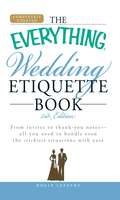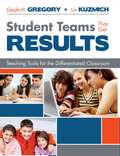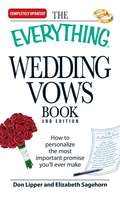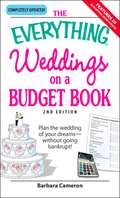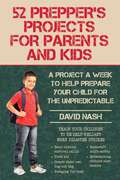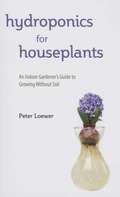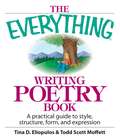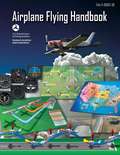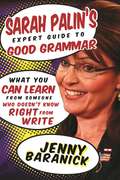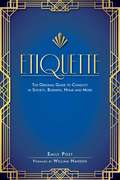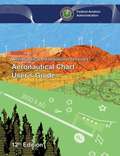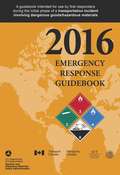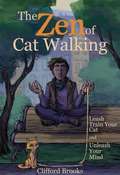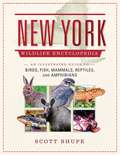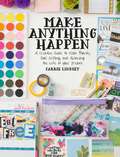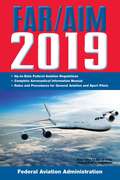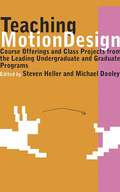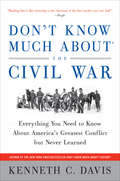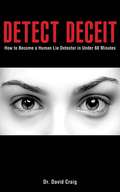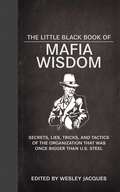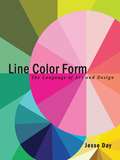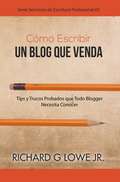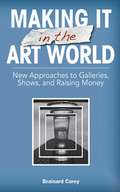- Table View
- List View
U.S. Constitution Book (The Everything®)
by Ellen M KozakDebates over constitutional rights impact you every day as an American citizen. But do you know what the U.S. Constitution actually says? This accessible guide contains the complete text of the Constitution, with short, descriptive margin notes throughout. Articles and amendments are then analyzed in depth to help you comprehend the basis of democracy. This valuable handbook covers:How the articles and amendments were draftedInsight into the intentions of the creators and the sources they usedControversial interpretations and Supreme Court decisionsHow the Constitution affects citizens every dayThe Declaration of Independence, the Articles of Confederation, and unratified Constitutional amendmentsThis book walks you through the history of this essential document and shows how it has guided lawmakers and judges for more than 200 years. This unbiased look at the Constitution will help you feel confident in your knowledge of this all-important document, gain a firmer understanding of how our government works, and put context around today's most pressing issues.
Wedding Etiquette Book (The Everything®)
by Holly LefevreStepfamilies. Children. Remarriages. They can create tricky wedding situations, affecting a bride’s decision-making and etiquette do’s and don’ts. This guide helps modern brides navigate every dilemma. This practical book offers the answers to brides most commonly asked etiquette questions, including:“Can I ask my future in-laws to help pay for the reception?”“How can I include stepparents in the wedding?”“Do I have to invite dates for single guests?”“How do I get my mother off my back when planning?”In addition to these questions, you will find answers to more unique situations such as: “Can I have a child-free wedding?”, “How can I limit alcohol consumption?”, and “What am I supposed to do with my father’s third wife?” Leading you through dilemmas as you will encounter them in your planning, this book is easy to use and understand. From the simplest sticky situation to an all-out family fiasco, this is the go-to resource for everything etiquette.
Student Teams That Get Results: Teaching Tools for the Differentiated Classroom
by Gayle H. Gregory Lin KuzmichThis resource shows how students who work together and share ideas with one another can deepen their understanding of essential concepts. Combining effective grouping strategies with other research-based practices, this resource focuses on the power of student collaboration and dialogue in differentiated classrooms. Students can strengthen critical thinking and achievement through three key skills: teaming to learn, sharing knowledge and skills, and integrating and applying learning. The authors offer more than 100 reproducible planning tools to help learners: * Improve critical thinking * Generalize and infer * Integrate content and Identify patterns * Increase adaptive and analytical reasoning By utilizing these innovative teaching tools and strategies with their student teams, teachers can prepare all students for deeper thinking and success--both in the classroom and on assessments!
Wedding Vows Book (The Everything )
by Don Lipper Elizabeth SagehornWriting personalized wedding vows is a wonderful way to make the big day that much more special. Packed with ideas, insights, and inspiration, this completely revised third edition helps you declare your love in a uniquely personal way. This book features information on how to develop meaningful, personal wedding vows, incorporate a favorite song or poem, get family members involved, include children, and more! For extra fun, this book also includes celebrity wedding vows and great love lines from the movies. This is the only book you need to create the perfect statement for their new life with their partners.This edition includes completely new material on: ethnic vow traditions from around the world, vows incorporating holidays and nature, and vows for same-sex ceremonies.
Weddings on a Budget Book (The Everything )
by Barbara CameronNot every couple has a bottomless bank account to pay for their wedding. Filled with 20 financial- and time-budgeting worksheets this book is a must-have for DIY brides-to-be who want to make the biggest day of their lives as memorable as possible - without breaking the bank.
52 Prepper's Projects for Parents and Kids: A Project a Week to Help Prepare Your Child for the Unpredictable
by David NashPrepare your child for the unpredictable through 52 prepper projects. Teach them basic outdoors survival skills, first aid, how to create their own "bug-out bag," and more.
Hydroponics for Houseplants: An Indoor Gardener's Guide to Growing Without Soil
by Peter LoewerPick your container, fill it with water, and sit back and watch your plant grow!This book is the answer to anyone who has ever shied away from growing house plants because of messy dirt or fear of things dying if left for a few days without water. Ditch the hassle and learn how to grow plants indoors with nothing but water.Peter Loewer, an inveterate inventor of water gardening techniques, has written and illustrated this charming guide to teach readers the basics of hydroculture. This technique of growing plants in water has a history of almost 300 years, from experiments by an English botanist to the giant automated factory greenhouses of the twentieth century where vegetables are now grown commercially by the ton. Learn how to utilize this simple, time-tested method in your own home and never worry about over- or under-watering again!Peter Loewer, an inveterate inventor of water gardening techniques, has written and illustrated this charming guide to teach readers the basics of hydroculture. This technique of growing plants in water has a history of almost 300 years, from experiments by an English botanist to the giant automated factory greenhouses of the twentieth century where vegetables are now grown commercially by the ton. Learn how to utilize this simple, time-tested method in your own home and never worry about over- or under-watering again!
Writing Poetry Book (The Everything )
by Todd Scott Moffett Tina D EliopulosGiving voice to ''what gets lost in translation'' is the challenge every poet faces. With The Everything Writing Poetry Book, that challenge just got easier. Featuring examples from works of celebrated poets and instruction on communicating your ideas, this clear and accessible reference helps you gain confidence as you find your own voice. Written by a team who each hold a master’s degree and teach creative writing and literature, this easy-to-follow guide has all you need to take your work to the next level. - With this handy guide, you will learn to:Create meter and rhyme - Express your innermost thoughts - Use imagery and metaphor - Polish your word play - Find your own rhythm - Work with other writersand more - The Everything Writing Poetry Book helps you make the most of this rewarding craft - whether you’re a fledgling poet or a seasoned wordsmith.
Airplane Flying Handbook: FAA-H-8083-3B (FAA Handbooks Ser.)
by Federal Aviation AdministrationThe Federal Aviation Administration’s Airplane Flying Handbook provides pilots, student pilots, aviation instructors, and aviation specialists with information on every topic needed to qualify for and excel in the field of aviation. Topics covered include:Ground operationsCockpit managementThe four fundamentals of flyingIntegrated flight controlSlow flightsStallsSpinsTakeoffGround reference maneuversNight operationsAnd much moreUpdated to include the most current information, the Airplane Flying Handbook is a great study guide for current pilots and for potential pilots who are interested in applying for their first license. It is also the perfect gift for any aircraft or aeronautical buff.
Sarah Palin's Expert Guide to Good Grammar: What You Can Learn from Someone Who Doesn't Know Right from Write
by Jenny BaranickA hilarious, informative guide to language and grammar inspired by America’s favorite maverick.It would seem to go without saying that a strong understanding of how to use language properly and effectively is a requisite for success in the 21st century. And yet, increasingly even some of America’s most prominent public figures and leaders seem to have only the most tenuous grasp of how to put together a coherent sentence or paragraph. No individual could be more representative of this unfortunate national tendency than Sarah Palin-the former Governor of Alaska, Fox News pundit, and now campaign surrogate for Donald Trump (another public figure with only a passing familiarity with how to use the English language).Time and again, Ms. Palin finds ways to bungle basic tenets of vocabulary, syntax, and grammar, often giving speeches or interviews that upon reexamination read more like the drunken ravings of someone unhinged. But it is for this very reason that Ms. Palin can be a great example for all Americans. Often it is only possible to learn from making mistakes, and Ms. Palin has made plenty. This book will be a guide that uses the colorful and chaotic language of Ms. Palin to illustrate key lessons of how (not) to write and speak well.
Veterinary Guide for Animal Owners, 2nd Edition: Caring for Cats, Dogs, Chickens, Sheep, Cattle, Rabbits, and More
by C. E. Spaulding Jackie ClayWhether you own cats, dogs, rabbits, chickens, horses, cattle, sheep, goats, pigs, or a combination of animals, you need expert information to make sure your animal friends stay happy and healthy. From nail care for dogs to treating saddle sores on horses to incubating turkey eggs, Veterinary Guide for Animal Owners, 2nd Edition offers advice in easy-to-understand language. With this comprehensive book, learn how to:Provide first aid for cattleVaccinate sheepTreat a colicky horseBreed chickensCare for bunniesTreat a diabetic dogHelp a cat with diarrheaAnd much more!Whether you are a 4H student, a home breeder raising chickens, the manager of a small farm, or the owner of a new puppy, this book-chock-full of strategies for preventing and curing common problems-is for you. Authors C. E. Spaulding and Jackie Clay also include a guide to choosing the right veterinarian, a glossary of commonly used terms, and a recommended reading list, making this a perfect no-nonsense companion for any animal owner.
Etiquette: The Original Guide to Conduct in Society, Business, Home, and More
by Emily PostFirst published in 1922, Etiquette has served for generations as the premiere guide to manners and decorum. It details the nuances of various social settings as well as how to act within them, so as not to offend any parties present.Different settings often call for different conduct. In addition to covering general forms of communication, salutations, greetings, and conversation, this classic manual also details what behaviors and topics are socially acceptable (and unacceptable) at specific events such as weddings, formal dinners, engagements, funerals, christenings, games and sports, business and politics, ball and dances, and many, many more. It will teach you the contemporary time period’s sense of how an individual should conduct oneself, offering tips and tricks long forgotten in an age of impulse, social awkwardness, and conversational disrepair, condoned by our reliance on technology.Featuring a new foreword by a leading etiquette consultant, pick up a copy of this stunning new edition of Etiquette—start improving your charm and conversational skills today!
Aeronautical Chart User's Guide: Aeronav Products (FAA Handbooks Ser.)
by Federal Aviation AdministrationThe updated 11th edition of the Aeronautical Chart User’s Guide by the FAA is a great reference for novice pilots and professionals alike. Printed in full color with detailed examples, this book provides all the information students and pilots need to know about all the symbols and information provided on US aeronautical charts and chart navigation publications. Readers will find information on VFR charts, aeronautical chart symbols, helicopter route charts, flyway planning charts, IFR enroute charts, explanation of IFR enroute terms and symbols, Terminal Procedure Publications (TPPs), explanation of TPP terms and symbols, airspace classifications, and an airspace class table.
Emergency Response Guidebook: A Guidebook For First Responders During The Initial Phase Of A Dangerous Goods/ Hazardous Materials Transportation Incident
by U.S. Department of TransportationIf you came upon an overturned truck on the highway that was leaking, would you be able to identify if it was hazardous and know what steps to take? Does the identification number 60 indicate a toxic substance or a flammable solid, in the molten state at an elevated temperature? Does the identification number 1035 indicate ethane or butane? What is the difference between natural gas transmission pipelines and natural gas distribution pipelines? Questions like these and more are answered in the 2016 update of the Emergency Response Guidebook. Learn how to identify symbols for vehicles carrying toxic, flammable, explosive, radioactive, or otherwise harmful substances and how to respond once an incident involving those substances has been identified. Always be prepared in situations that are unfamiliar and dangerous and know how to rectify them. Keeping this guide around at all times will ensure that, if you were to come upon a transportation situation involving hazardous substances or dangerous goods, you will be able to help keep others and yourself out of danger. With color-coded pages for quick and easy reference, this is the official manual used by first responders in the United States and Canada for transportation incidents involving dangerous goods or hazardous materials.
The Zen of Cat Walking: Leash Train Your Cat and Unleash Your Mind
by Clifford BrooksGoing for a walk is no longer just for the dogs! Experienced cat owner Clifford Brooks is here to teach you and your cat how to enjoy a stroll together. Cats are naturally adventurous creatures, and with the help of a leash and Brooks’s tips, you can indulge those instincts with a sense of security. As any animal trainer will tell you, the magic is in your attitude and sensitivity to your kitty’s needs and subtle reactions to new things. With that in mind, Brooks encourages cat owners to embrace Zen meditation as the foundation for leash training. Benefitting both you and your furry friend, practicing mediation will: • Provide a calm atmosphere in which to learn an enjoyable skill and explore new environments together. • Foster a positive energy between the two of you. • Cultivate patience and appreciation for simple accomplishments. With step-by-step instructions, meditation guidance, and interviews with other successful cat walkers, you’ll learn how cat walking can have a healthy impact on your life and the life of your feline companion. Essentially, you will become a more sensitive cat owner, able to detect when your own presence is affecting your cat’s behavior. Combining a practical skill with a thoughtful approach, Brooks’s advice will do wonders for the time you spend together.
The New York Wildlife Encyclopedia: An Illustrated Guide to Birds, Fish, Mammals, Reptiles, and Amphibians
by Scott ShupeIn The New York Wildlife Encyclopedia, nationally known naturalist Scott Shupe has collected information on all the wildlife that reside in the Empire State. The first in a series of state wildlife encyclopedias, this book will be a handy, usable, layman’s guide to New York’s wildlife.Included are over 800 color photographs, depicting the different species of mammals, reptiles, amphibians, birds, and fish, while also offering over 600 range maps to show their territory. Along with basic information for the biology of each animal, Shupe includes the size, habitat, and abundance of each species located in the state.Whether you’re a lover of the outdoors, photography, or are looking to learn more about your state, this comprehensive guide will teach you about the wonderful wildlife that covers the water, earth, and skies of New York.
Make Anything Happen: A Creative Guide to Vision Boards, Goal Setting, and Achieving the Life of Your Dreams
by Carrie LindseyEveryone wants to accomplish their goals and live the life of which they dream. But in today’s busy age, how do we make that happen? This interactive book helps readers live an intentional life by determining their priorities and tapping into their creativity to create beautiful and functional vision boards and manageable action plans to achieve their goals. Through guided worksheets, vision board templates and samples, and planning pages, author Carrie Lindsey inspires readers to get clear on what they really want and then make it happen. Getting your life in order has never been so much fun! What would happen if you set aside a little time to write down what makes you excited and what drags you down? What if you took it a step further and set specific goals for living your best life? What if that process could be creative, exciting, and lead to actual change?Use the guided worksheets to establish your priorities Create vision boards that make your goals concrete and attainable Discover strategies to manifest the life of your dreams Change is hard, but it’s worth it. And with this book, it’s also a heck of a lot of fun. Readers also have access to a private Facebook group full of members who are working towards living their dreams.
FAR/AIM 2019: Up-to-date Faa Regulations / Aeronautical Information Manual (FAR/AIM Federal Aviation Regulations)
by Federal Aviation AdministrationAll the information you need to operate safely in US airspace, fully updated.If you’re an aviator or aviation enthusiast, you cannot be caught with an out-of-date edition of the FAR/AIM. In today’s environment, there is no excuse for ignorance of the rules of the US airspace system. In the newest edition of the FAR/AIM, all regulations, procedures, and illustrations are brought up to date to reflect current FAA data. This handy reference book is an indispensable resource for members of the aviation community, as well as for aspiring pilots looking to get a solid background in the rules, requirements, and procedures of flight training. Not only does this manual present all the current FAA regulations, it also includes:A study guide for specific pilot training certifications and ratingsA pilot/controller glossaryStandard instrument proceduresParachute operationsAirworthiness standards for products and partsThe NASA Aviation Safety reporting formImportant FAA contact informationThis is the most complete guide to the rules of aviation available anywhere. Don’t take off without the FAR/AIM!
Teaching Motion Design: Course Offerings and Class Projects from the Leading Graduate and Undergraduate Programs
by Steven Heller Michael DooleyHow motion design is taught in more than 45 leading programs. * Detailed syllabi and descriptions of class projects and assignments * Go-to guide for professors and teachers planning their courses * Course plans from School of Visual Arts, Ohio State, Rochester Institute of Technology, many other top schools. This definitive study of motion design is essential reading for everyone teaching or studying design. Now, for the first time, authors Steven Heller and Michael Dooley present a comprehensive look at course offerings from more than 45 leading programs devoted to design, illustration, animation, and computer art. Taken together, they provide a close-up look at the principles and practices of 3D computer animation, character animation, pictorial background illustration, motion graphic design, interactive media, film design, and more, with class projects and syllabi from many of the most prestigious schools in the country. Organized in easy-to-use sections by year of study, this invaluable tool will be every graphic design educator's go-to guide.
Don't Know Much About the Civil War: Everything You Need to Know About America's Greatest Conflict but Never Learned (Don't Know Much About Series)
by Kenneth C. DavisWhy did Abraham Lincoln sneak into Washington for his inauguration? Was the Gettysburg Address written on the back of an envelope?Where did the Underground Railroad run? Can you answer these questions? If not, you're not alone! New York Times-bestselling author Kenneth C. Davis comes to the rescue, deftly sorting out the players, the politics, the key events -- Emancipation and Reconstruction, Shiloh and Gettysburg, Generals Grant and Lee, Harriet Beecher Stowe -- and providing little-known facts that will enthrall even learned Civil War buffs. Vivid, informative, and hugely entertaining, Don't Know Much About® the Civil War is the only book you'll ever need on "the war that never ended."
Detect Deceit: How to Become a Human Lie Detector in Under 60 Minutes
by David CraigIt doesn't take mind reading superpowers to be able to tell when someone is lying-but it does take special skills and a little practice. In Detect Deceit, David Craig, an international expert in undercover operations, provides readers with an easy-to-follow guide on applying lie detection skills to your everyday life. From bargaining, making a purchase, or dealing with children, to the more serious issues of negotiating a contract or identifying infidelity, Craig delivers simple but effective tips and techniques we can all use to see behind the façade and get to the truth. Split into three parts, the book looks at the nature of lying and how to detect lies, and includes an easy reference section that summarizes all the main points. Lying is a normal part of human communication and sometimes is necessary to protect someone's feelings, but there are also hurtful lies meant to deceive. You can't always rely on what comes out of someone's mouth. With fullcolor photographs and practical examples, Detect Deceit provides anyone with the tools to be a human lie detector. The mystery of what a person is really thinking is finally unlocked in this fascinating and informative book.
The Little Black Book of Mafia Wisdom: Secrets, Lies, Tricks, and Tactics of the Organization That Was Once Bigger Than U.S. Steel (Little Red Books)
by Wesley Jacques"Don't let your tongue be your worst enemy." --John "Sonny" Franzese"You can go a long way with a smile. You can go a lot farther with a smile and a gun." --Al Capone"I never lie to any man because I don't fear anyone. The only time you lie is when you are afraid." --John Gotti Despite the fact that secrecy is vital to the Mob, mobsters have revealed themselves to be notorious gossips, prone to bragging, and even outrageous loudmouths. Delve into the inner workings of the Mob and the mindset of those who run it through these mesmerizing quotes from some of the smoothest and most dangerous criminals, real and fictional, who ever made headlines. Whether they're spilling to their lawyers or making blood-chilling threats, mobsters reveal startling insights on leadership, guilt, and loyalty. While at times shocking, crude, and even unintentionally funny, these quotes also help us to see the humanity behind these dark bosses of the underworld . . . and give us a little insight into the dark side of our own natures, as well.
Line Color Form: The Language of Art and Design
by Jesse DayDesign students today are more visually literate than ever before, and their learning style naturally favors the visual over the textual. So why should they learn art and design theory from a traditional textbook? The only guide of its kind, Line Color Form offers a thorough introduction to design theory and terminology in a visually appealing and accessible format. With hundreds of illustrations and minimal text, this primer was created with visual learners in mind, making it ideal for art students as well as those for whom English is a second language. Each chapter focuses on a single aspect of visual composition, such as line, color, or material. After an illustrated discussion of fundamental vocabulary, the chapters move on to applications of the concepts covered. These applications are again demonstrated through images, including photographs, color wheels, significant works of art, and other visual aids. Each image is accompanied by a descriptive paragraph offering an example of how the vocabulary can be applied in visual analysis. The book culminates with a section on formal analysis, aimed at teaching readers how to express their observations in formal writing and critical discourse. With its emphasis on the visual, this unique guide is a highly effective learning tool, allowing readers to gain an ownership and mastery of terms that will benefit them academically and professionally. Whether you are a design educator, student, or professional, native or non-native English speaker, this bright and concise reference is a must.
Cómo Escribir un Blog que Venda
by Richard G Lowe JrHay algo en la manera de escribir un artículo que hace al lector tomar la decisión de hacer algo. Ese es el objetivo de este libro. Aprenderá a crear un artículo que consiga el interés de los lectores, los atraiga, los informe y los lleve a tomar una decisión al terminar la lectura.
Making It in the Art World: New Approaches to Galleries, Shows, and Raising Money
by Brainard CareyLearn how today's artists survive, exhibit, and earn money, without selling out! This book explains how to be a professional artist and new methods to define and realize what success means. Whether you're a beginner, a student, or a career artist looking to be in the best museum shows, this book provides ways of advancing your plans on any level. Making It in the Art World is an invaluable resource for artists at every stage, offering readers a plethora of strategies and helpful tips to plan and execute a successful artistic career. Topics include how to evaluate your own work, how to submit art, how to present work to the public, how to avoid distractions in the studio, and much more.

